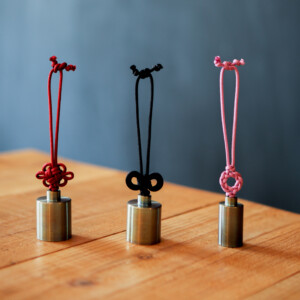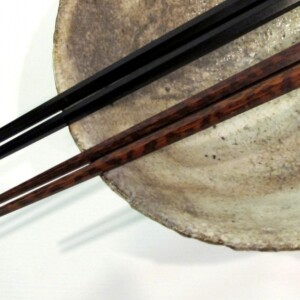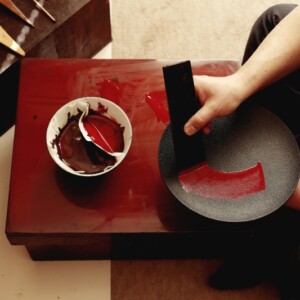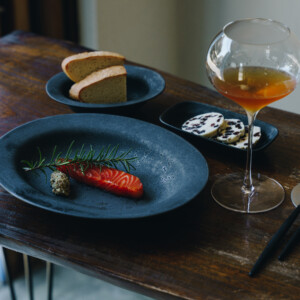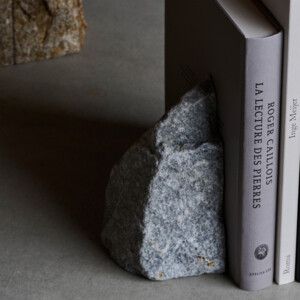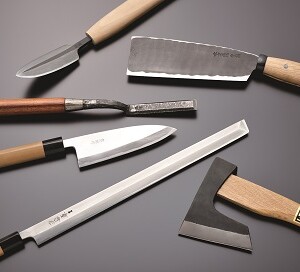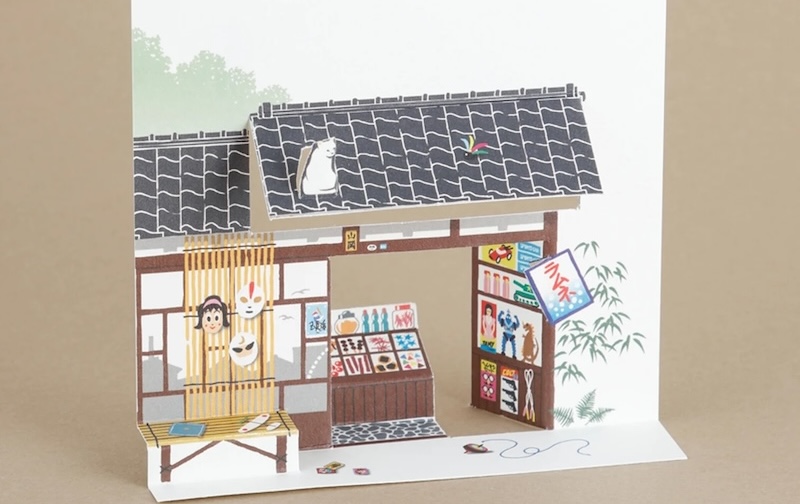
Dakkibun” expresses the good old taste of Japan.
Letters send feelings to the recipient that cannot be conveyed by e-mail or telephone. The thrill of opening the envelope and the warmth and warmth in the words are exceptional.
Not only text, but also Japanese art can be delivered by “kaketsubun”. Let us introduce you to the “Makigebun,” which expresses the good old culture of Japan.
What is “Makigebumi,” a Japanese-style pop-up card?

Kakigebumi” is a Japanese-style pop-up card that was born out of a desire to preserve Japanese cityscapes and to convey the good old days of Japan.It depictsbeautiful scenery of the four seasons and traditionalstreetscapes.
Among them, “kokusai-bun postcards” are postcards that are cut and folded in accordance with the design. Anyone can easily create a three-dimensional postcard by simply folding it. The postcard can be mailed as a postcard before folding, so the recipient can enjoy the process of assembling the postcard and display the three-dimensional postcard at his/her favorite place.
Many people are familiar with pop-up works such as Christmas cards and pop-up picture books, butthe “kakuseibun postcard” is the ultimate Japanese world expressed only with a single sheet of paper.
Susumu Yamaoka, creator of “Makigebumi
Susumu Yamaoka, the creator of “Makigebumi,”was born in1959in Negishi, Taito-ku, Tokyo.
Negishiis the area around thecurrentUguisudaniStation on theJRYamanote Line, and is an area that evokes a sense of Japanese history dating back to the Edo period. Temples and town houses have gathered here since ancient times, and the area has flourished as a place for the common people to live.
Mr. Yamaoka used to often ride his bicycle to the neighboring town of Yanaka for fun. The Yanaka Ginza shopping district is a bustling community, and he grew up in the good old days of Japan. In an interview, Mr. Yamaoka said, “Even back then, I loved the streets lined with a variety of stores.
He wanted to preserve the charming original Japanese landscape of his boyhood, and the “GenbunPostcards“were born.
In the“Attractive Japanese Souvenir Contest2011“sponsored by the Japan Tourism Agency in2011,he won the Grand Prix for his“Machinami Postcard,” a three-dimensional assemblage of a Showa-era townscape.Various stores and facilities from the nostalgic Showa period have been converted into postcards, and when you put them together, you can create a cityscape.
Since then, the company has continued to produce original designs, including sightseeing spots and architectural structures from all over Japan, as well as works in collaboration with characters.In particular, postcards with transcriptions of real places of interest, etc., are popular as optimal local souvenirs.
Why are they so popular among overseas tourists?
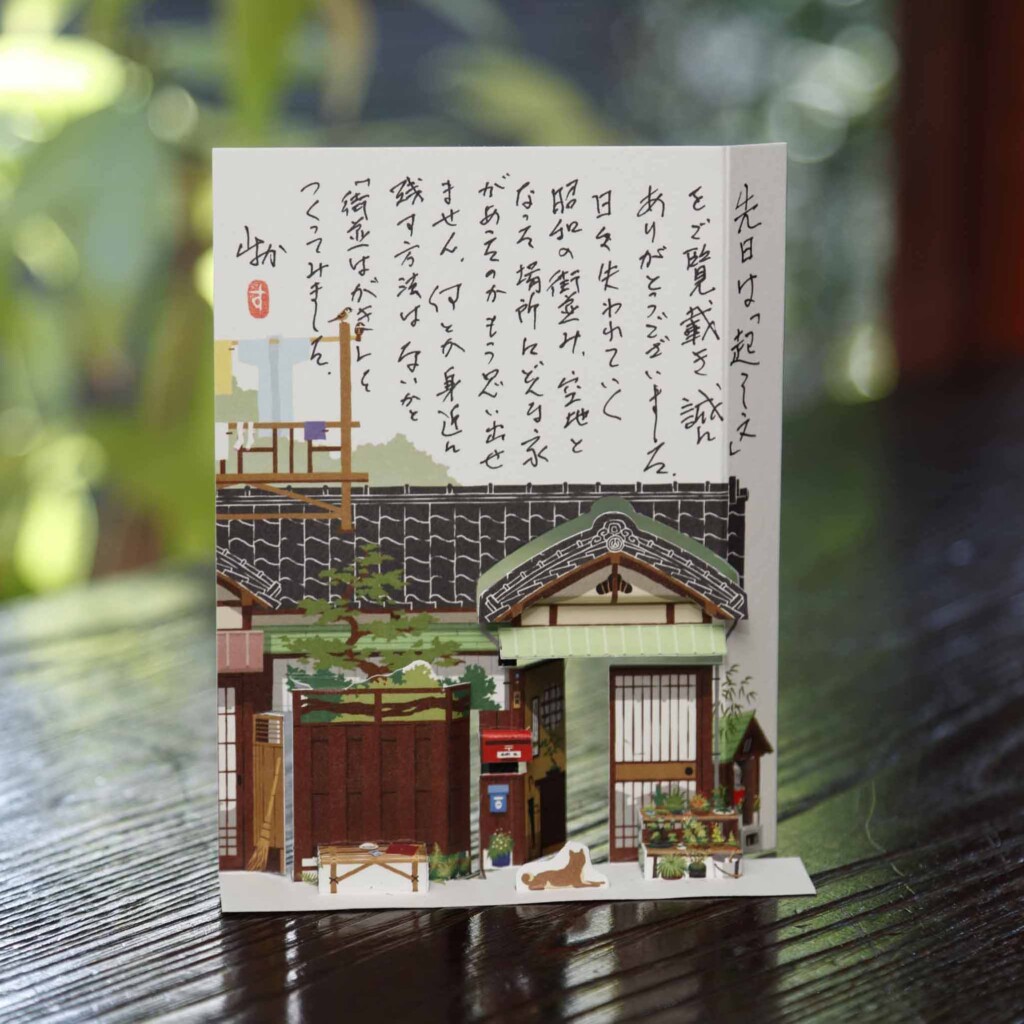
Many of the“kakemon”express auniquelyJapaneseflavor, and are popular among overseas tourists. Since they can be folded and flattened,they are popular souvenirs for touristsfromoverseaswhocan easily take them home.
Dakigakebun” can easily bring back the Japanese atmosphere you experienced during your sightseeing trip. Retro buildings in downtown areas visited by tourists and scenes of seasonal scenery are expressed in a three-dimensional “Japanese” world.
One particular point is that postcards are very compact and can be taken home in large quantities without worrying about the amount of luggage.Since there are moreopportunities to send message cards overseas than in Japan,the“kakuseibunpostcards,” which express the unique flavor of Japan in a delicate three-dimensional card,would be theperfectgift.
Introducing our recommended Kakibun postcards
There are a variety of “Makigebumi” products on the market that are popular both in Japan and overseas, and we would like tointroducetwothatwe recommend.
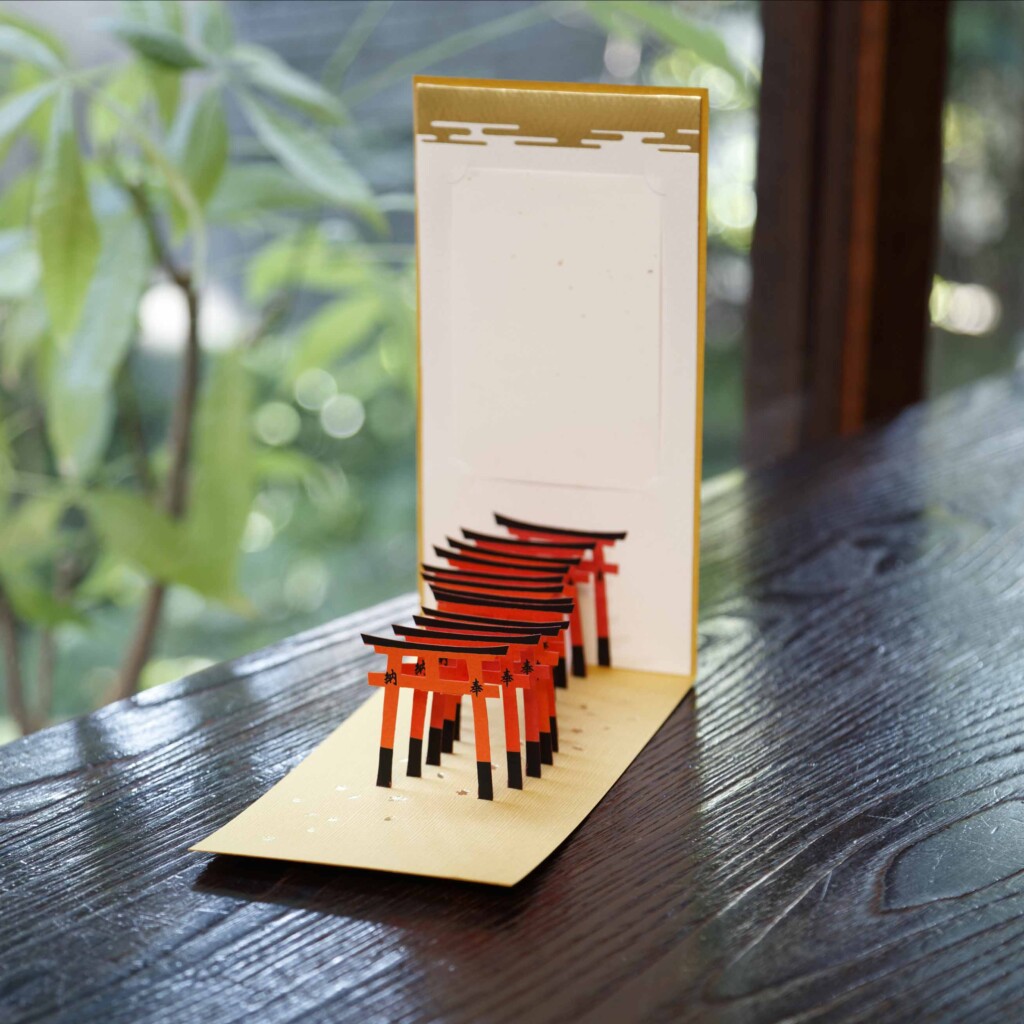
Torii,” a Japanese-style pop-up card, is the first work by Mr. Yamaoka, the creator of “Makigebumi. Itisa three-dimensional rendition of the Senbon-torii, thegatewayto the Nezu Shrine where his own wedding took place.
When opened, the twelve torii gates become three-dimensional, allowing the viewer to feel close to the atmospheric Japanese shrine.
This “Makigebumi” is perfect for writing and sending your thoughts and feelings at weddings and other celebratory events.
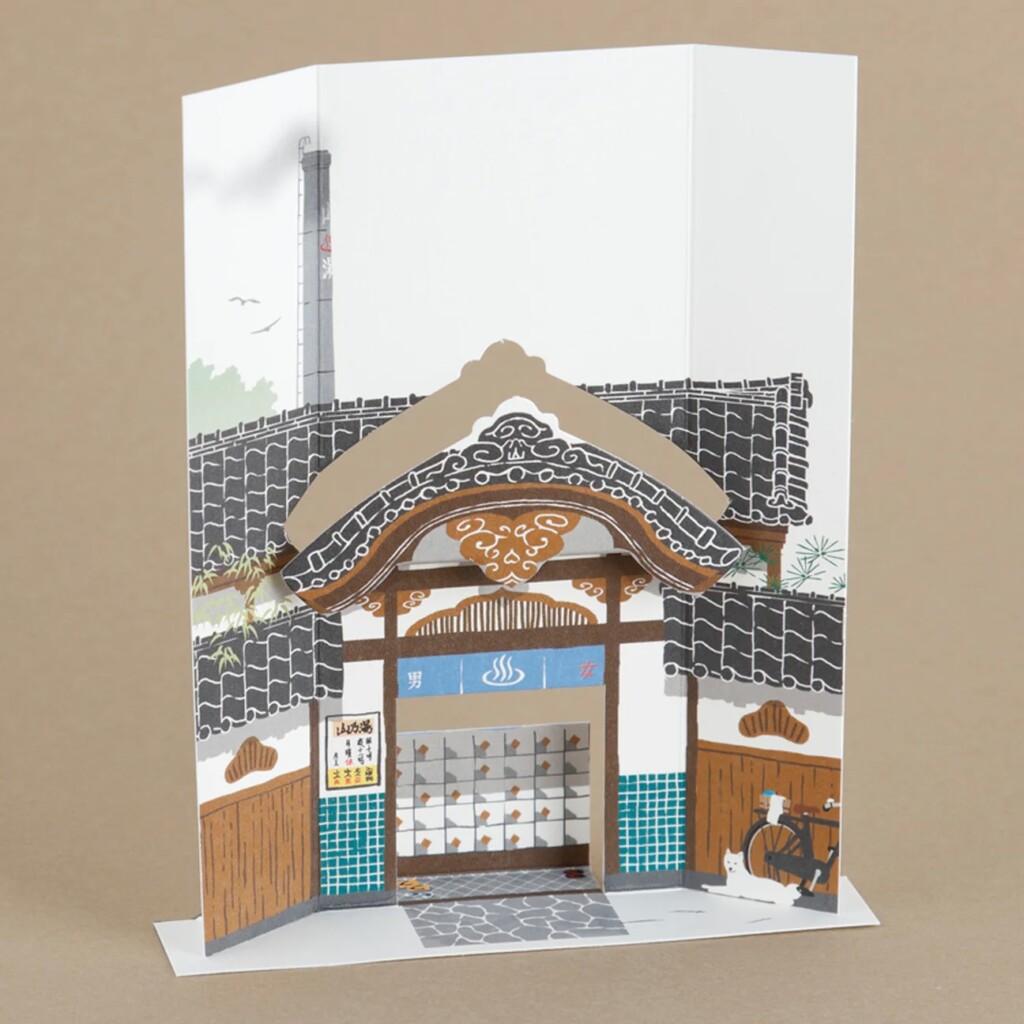
Machinami postcard“Sento (public bathhouse)” is a “kakigibunpostcard” that evokes the sento (public bathhouse) that existed in the neighborhood during the Showa period (1926-1989).
When assembled, the entrance area of a public bathhouse becomes three-dimensional, creating an atmosphere that makes you want to step into the entrance of a public bathhouse. The smoke from the chimney allows the viewer to imagine the warm water of a sento, and it is almost as if one can hear the conversations that take place in a sento.
Conclusion
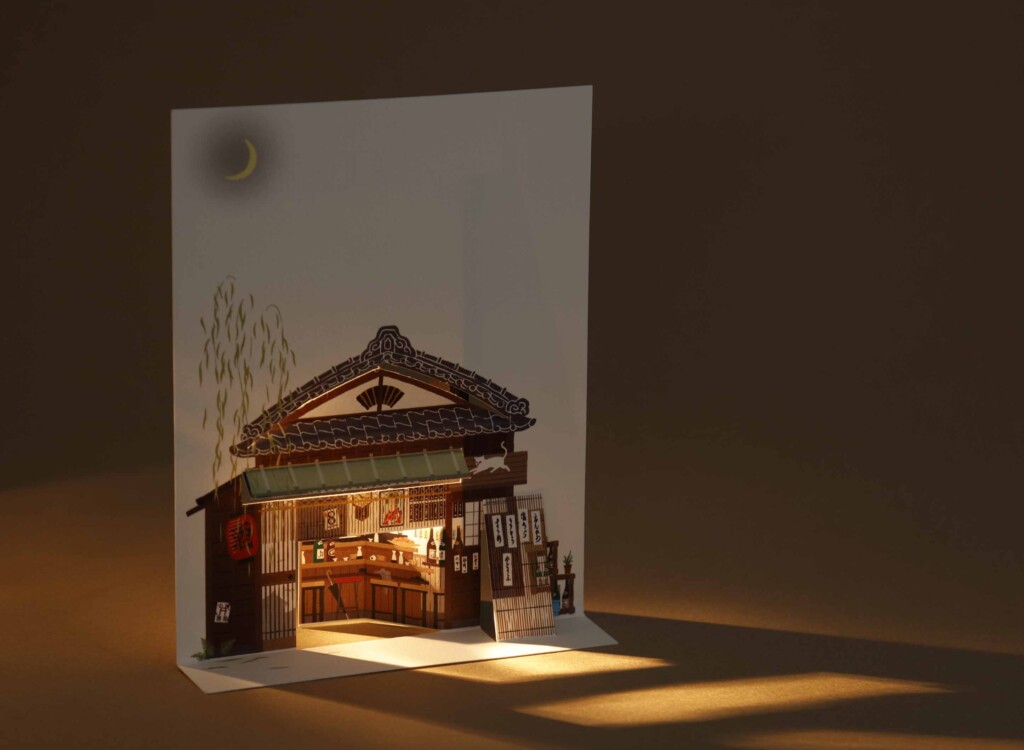
We have introduced mainly “Machinami postcards,” whichare three-dimensionally woken up nostalgic downtown streetscapes.The “Makigibun” pop-up cards of good old Japanese scenery can be enjoyed as letters to your loved ones or as interior decorations.
Even today, when communication with people has become easier, letters have the quality of conveying the warmth of people. Regardless of age or nationality, you can feel the Japanese flavor of “Makigebun” by picking one up.



